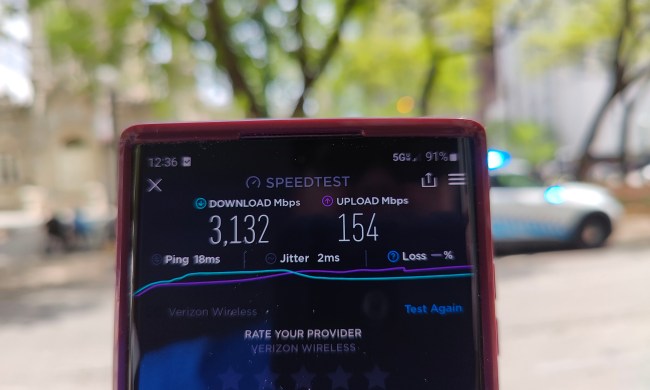MediaTek has announced the M80 5G modem, its first to combine both Sub-6 and mmWave 5G technologies, which is important if it’s to make a greater impact on the U.S. in the future. Previously, MediaTek’s M70 modem, which is found in its Dimensity mobile processors, only supported Sub-6 networks, and was used inside the T-Mobile version of the LG Velvet.
The M80 modem is capable of connecting to standalone (SA) and non-stand-alone (NSA) 5G signals at a maximum of 7.67Gbps download and 3.76Gbps upload. The modem is suitable for 5G-capable networks all over the world, supports dual-5G SIMs and technology including dual Voice over New Radio (VoNR), and will connect to 4G LTE Cat-19 networks too.
However, the inclusion of mmWave is a key piece of tech for attracting manufacturers selling devices in the U.S. Verizon already operates a limited mmWave network, and while T-Mobile and AT&T have concentrated on Sub-6 for now, they are exploring mmWave in some areas. On the phone side devices like the iPhone 12 range, which support both Sub-6 and mmWave 5G, are likely to become more common as prices of including both Sub-6 and mmWave, and the associated network contracts, fall.
MediaTek isn’t the only chipmaker with an integrated Sub-6 and mmWave modem. Qualcomm, Huawei, and Samsung all make modems that support both technologies, and the U.S. isn’t the only one looking at mmWave either. China, Japan, South Korea, and Australia are all either experimenting with or launching in a limited fashion, mmWave 5G networks. However, like Europe and the U.K., Sub-6 is used for most 5G network at the moment.
The M80 modem’s announcement follows the launch of MediaTek’s latest 5G processor, the Dimensity 1200, which is aimed at mid-to-high-end smartphones. MediaTek is known for providing high-spec chips at a reasonable price, and more manufacturers are jumping on board with the company to help lower the cost of 5G-capable phones. Pairing the M80 with the Dimensity 1200 will ensure it stays competitive, especially in fast-growing
MediaTek says the M80 modem will be available to its partners later this year, so don’t expect to see it inside any hardware you may be able to buy for a while.



